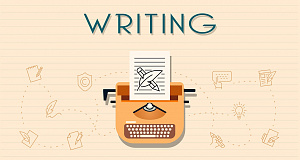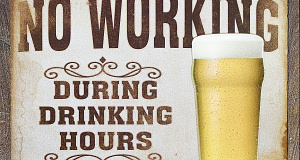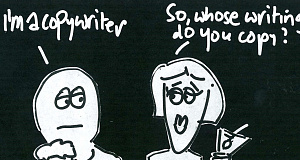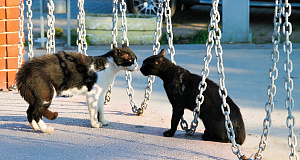In a previous article, I explained what copywriting was (for dummies, of course, which we all are, on some level) and we also delved a little into the theoretical/scientific side of it. This time, I thought we could expand upon the subject with some practical examples. Which is why I selected some of the best examples of advertising copy that I could find.
We’ll see exactly what is the role and impact of a text message in an ad or print and how the text, alongside image and other graphic elements can convey complex creative concepts, move us, make us care or draw our attention.
There are two types of people – those who pay more attention to text (copywriting) when viewing an ad and those who focus on the symbolic message (images, the visual/graphic component of a print).
There are ads that manage to impress whilst staying conclusive even without the use of texts, but we won’t be focusing on them in this article. Instead, we’ll see some examples of really cool copywriting in which the star of the play is..you’ve guessed it, the text. Let’s begin...
The coolest examples of ad copy
#1 Coca Cola – brand positioning via text

Those who know me are well aware that I could talk about Coca Cola for five weeks in a row undisturbed, if I wouldn’t annoy the living daylights out of everyone around and if I didn’t risk getting at least two slaps across the face. It’s my favorite brand for many reasons – one of them is the manner in which Coca Cola chooses to use text for their campaign messages, as well as branding and positioning.
Many of us pay little to no attention to text when viewing Coca Cola ads. Instead, what usually draws our attention are the well-known brand symbols: the train from the Christmas commercials, the design of the bottle, the polar bears etc.
Why are these copywriting examples so interesting? Because the brand establishes itself alongside its main competitors (Pepsi, especially) by reaffirming its position – it tells us again, in non-negotiable terms, that it is the only brand that’s capable of delivering the unique taste of the famous cola drink.

The slogans „The Real Thing” or „Continuous quality is quality you trust.” tell you, subtly, that other brands can try and even manage to get close, but they will never be authentic, only copies of the original.
It might sound arrogant but Coca Cola is one of the most long-lasting brands on the market today for this reason precisely – it’s authentic.
#2 Choose second best, market leaders are self-sufficient

One of the best copywriting examples that I’ve ever seen. If you’re pursuing university studies/BA’s in Advertising, Marketing, Communications and PR etc., you most definitely know this example because teachers bring it up in class a lot.
The story of this campaign, briefly, is this: AVIS is a company that, in the ’50s was in competition with another firm, HERTZ who was the market leader.
Any copywriter has his work cut out for him when his job is to draw people to a second-place brand, given our natural tendency to pick the market leader because we associate first place with attributes such as success or quality.

Why was the copywriter from AVIS so goddamn cool? Well, if we think about it, we also have a native impulse to feel empathy for those who try their hardest and are still not deemed the best. The phenomenon is called „empathizing/sympathizing with the underdog” and I think many of us have been in that position, too.
How would you feel if you ALMOST won the lottery, if you ALMOST won an important race?
By the use of the slogan „We Try Harder”, the copywriter managed to turn a competitive disadvantage of the brand into an asset. The person at the top is self-sufficient and doesn’t make the same efforts because, due to arrogance perhaps, believes that nothing threatens his position. On the other hand, the one on the second place would to anything to reach the top.
Clever and still so simple, this campaign is, to my mind, a benchmark for advertising copy.
#3 What does it mean to fight like a girl?

The Always #FightLikeAGirl campaign is one of the most well-known feminist campaigns internationally and one of those copywriting examples that impresses through simplicity and its ability to reunite, in a single phrase, the experience of girls and women everywhere.
If you’re a girl reading this article, you most definitely heard one of the following phrases at least once in your life: you hit like a girl, you complain like a woman, stop crying like a girl, you dress/run like a girl (these are also told to men in a derogatory manner, as if femininity itself is shameful) etc.
Although profoundly misogynistic, these types of expressions are part of the Romanian day-to-day talk and not only, they are part of the daily realities of women everywhere.

Why were the guys from Always so brilliant? The chosen hashtag, as well as the campaign texts uses encompass the creativity and the intelligence of the copywriter. He manages to turn a phrase commonly used in a derogatory fashion – like a girl or doing things like a girl – into an empowering motto that boosts self-confidence.
The copywriter is able to give the target audience the chance to redefine what it means to be a girl and do things like a girl. This campaign manages, through its universal character, to speak to all women, regardless of age and remind them that no aspect of femininity is shameful. We can say that it’s one of the best copywriting examples because the text is the star of the campaign. And it’s a very good one, no doubt about it.
#4 Save water and save someone’s life

The YANDR print for the International Water Day is an example of emotional copywriting. We can tell by analyzing the picture of the child, alongside the slogan:” Think about what you could save when you save water.”
Let’s be honest, most of us pay no attention to generic ecological messages such as „Save water” or „Save the planet.” In short – we don’t really care, it doesn’t pique our interest, no matter how serious the underlying issue is.
Why should we like this ad and execution, respectively? The copywriter manages to encompass, in as little words as possible, the core essence of the issue, to deliver a message that draws the attention of a target audience that isn’t commonly receptive to social responsibility messages. Moreover, he manages to make all of us think about the impact of our behavior on other people. The human side of the problem is one we almost never think about.
10 points from me, Mr/Mrs/Ms copywriter from YANDR!
Is text the forgettable part of an ad? No way, Jose!
Whether you’re an advertising enthusiast, a mere observer or the recipient of these prints, you most definitely can’t neglect the importance of text in building an impactful ad.
These prints make you stop, take a few precious seconds of your time and think about something you’ve been ignoring thus far. They draw your attention towards social, gender, environmental or political issues in an interesting manner, they make you get involved or pay attention with the most original of approaches. A large part of the credit is the copywriter’s – and rightfully so.
See you next week with the second part of this article in which we’ll analyze some more cool ads!
Like what you read? Pass it on!










